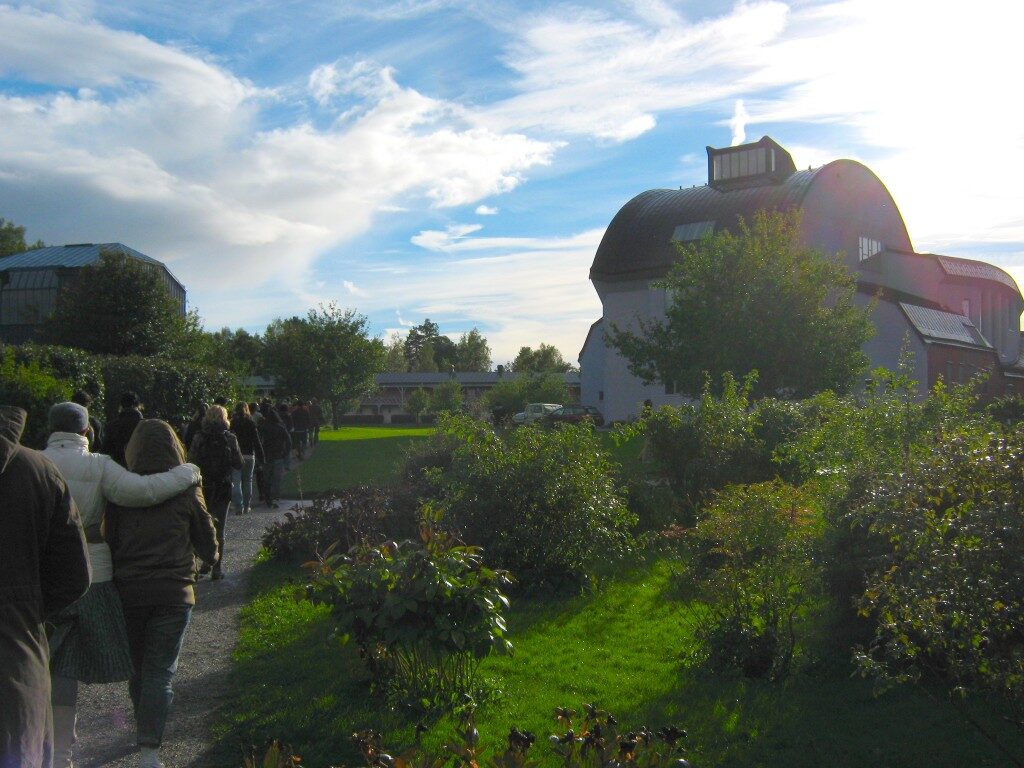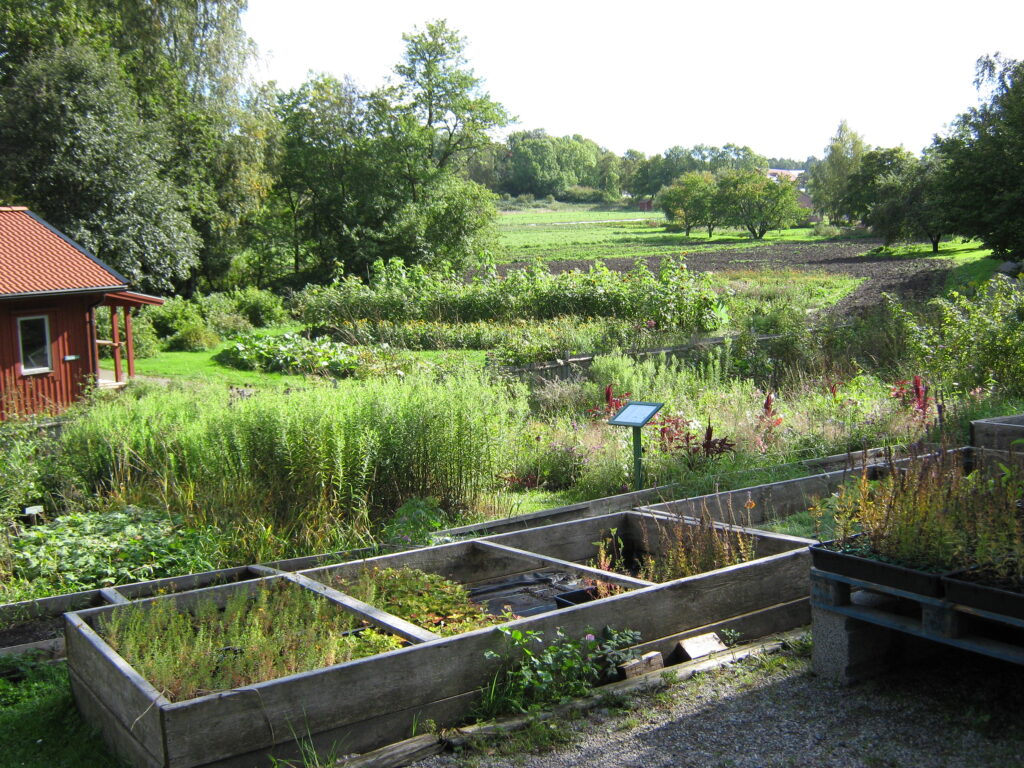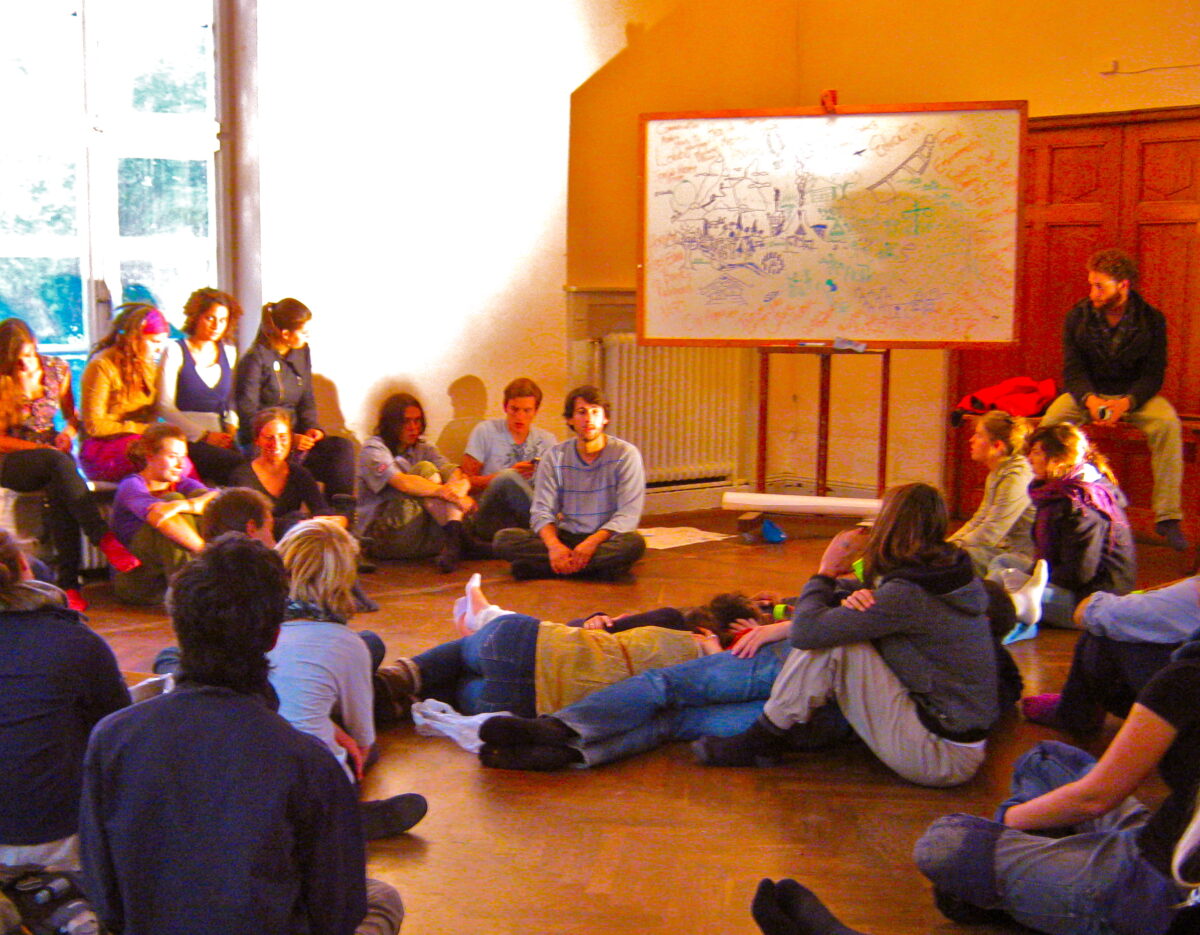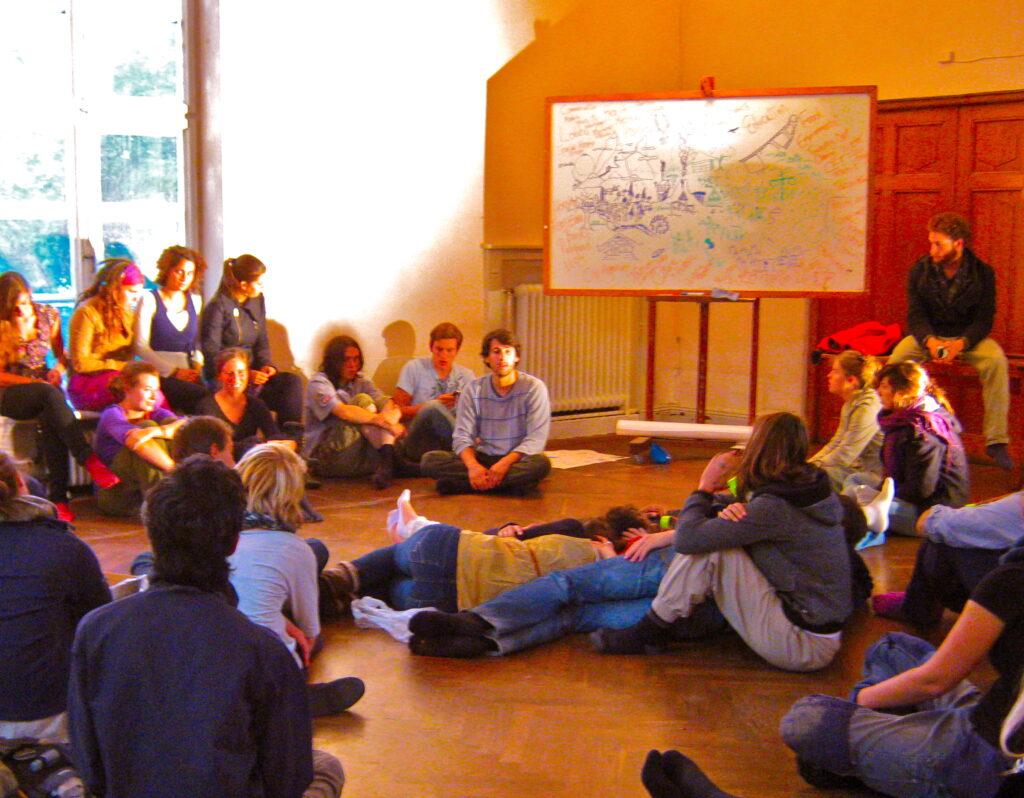When I started my Masters in Adult Education and Community Development, I had unique interest which would take me deep into the 150 year history of alternative education and its connection to Canadian adult education system as well as a study trip to Sweden to study Folk High Schools.
So what are folk high schools exactly? Here’s a short piece of my work (with super power house edits by Ashleigh Dalton) which was recently published in the Global Citizen Digest and can be viewed here all cleaned up and ready to go. Here is the text with a few extra photos of my own.

Grundtvig’s Yippies: Sweden’s innovative folk high school creates space for global learners
“The best way to learn about YIP would be to live it yourself”, Reinoud Meijer, the Program Coordinator for the International Youth Initiative Program (YIP) suggested to me over Skype. Within a week of that brief conversation across the Atlantic Ocean, I arrived in the small Swedish village of Ytterjärna to experience firsthand what Meijer was talking about. In Ytterjärna resided the centre of YIP, an innovative education model with an undaunted aim to change the world. My task of the trip: to uncover what appeared to be the creative blend of a gap-year program, social entrepreneurship training and global education.
Folk High Schools
YIP is based on the Scandinavian community college model called folk high schools. They emerged from the vision of Danish Bishop N. F. S. Grundtvig as a humanistic model of adult education that would counter what he saw as a problematic contemporary education system. Grundtvig referred to existing Scandinavian educational institutions of early nineteenth century as “schools for death”, claiming that they taught dead subjects, dead language and “deadened the students who were forced to endure them” (Davis, 1971, p. 27). In contrast to ‘standard’ post-secondary institutions like universities and colleges, folk high schools require no exams, offer no diplomas, and express an explicit commitment to dialogue and student-centred curriculum (Toivianen, 1995; Paulston, 1980). Instead, folk high schools are small post-secondary residential learning centres that emphasize creating a sense of community and captivating learners into engaging with civil society. The result of Grundtvig’s efforts and persistence for a ‘School for Life’ was the opening of the first folk high school in 1844 in Denmark.
Folk high schools are immensely popular in Scandinavia, attended by approximately one hundred thousand students each year (Bagley & Rust, 2009). Currently, more than three hundred folk high schools exist in Scandinavia, each with their own governing body and funding (ibid). Most notably, folk high schools do not charge participants tuition or costs that are not directly related to their living and material costs. Folk high schools are typically promoted to youth aged 18 to 25 years of age as a transitional year for personal development before focusing on a professional or academic career (Toivianen, 1995). Courses vary widely, focusing on such curriculum as the arts, outdoor leadership, religious studies and organic agriculture (“Folkehogskole,” 2011). All folk high schools have a focus on advancing democratic and social participation (ibid).
Anthroposophical Beginning
Although Grundtvig’s folk high schools influenced adaptations in Sweden, it was Rudolph Steiner’s anthroposophy that eventually inspired the emergence of YIP. Anthroposophy, translated as human wisdom, has led to Waldorf education, as well as holistic practices in farming, medicine and business. Following a decade of meetings, conferences and conversations by Waldorf youth and educators, the initial concept for a post-secondary international service-training program was formed. While its formation is interlinked with the lives of its anthroposophically-educated organizing staff, YIP is committed to exploring multiple perspectives and forces that shape society including Steiner’s philosophy and its applications.
The core curriculum of YIP is based on social entrepreneurship principles, understanding current global issues, and as the name Youth Initiative Program implies, encouraging initiative amongst its participants. Each week, students or “yippies” as they affectionately call themselves, are immersed in a different field of focus taught by international experts and innovators in the field. Previous facilitators to YIP have included former presidential candidate of the Phillipines Nicanor Perlas, and founding publisher of Utne Magazine Eric Utne. Weekly topics have ranged from the most recent trends in social media innovation, facilitation processes, sustainable building design and political economics to traditional practices of storytelling, portrait painting and theatre. Meijer likes to say that although YIP is a yearlong program, “it takes a lifetime to digest”.
YIP offers a full day intensive residential program for youth aged 18 to 25. Situated 55 kilometres south of Stockholm, Sweden, YIP sits on the expansive Järna Fjord which connects to the Baltic Sea. Since beginning in August 2008, YIP has graduated over 75 participants from 20 different countries. The 2010/11 semester will produce its third graduating class, with 40 participants from 18 countries, including three Canadians.
The Living Word
A critical focus of YIP, and folk high schools in general, is what Grundtvig termed the “Living Word”, the process of learning within the present moment. According to Lawson (2000), the Living Word describes the use of dialogue between the teacher and learner where the teachings remain alive within the teacher and are based in the learners’ reality and interests. The method of teaching is often centred on workshops that emphasize group work. This process allows teachers to support and guide students’ individual learning processes (Toivianen, 1995). Contrary to a lecture style of teaching, dialogue helps both the learner and teacher to name their current reality and come to common understandings, and encourages social transformation and equality (Freire, 1970). Bolivian participant Joaquin Zambrana explained the value of youth learning for themselves: “(YIP Staff) give tools, knowledge, things you can use to build what you want to built, but it is always up to you”.
A frequent practice of folk high schools is its focus on inner narrative. Bugge (1983) suggests Grundtvig aimed to “make people conscious of what they are”, “what they have to do”, and “what it all means” (Bugge, 1983, p. 19). Similarly, folk high school learners are often at a time of transition and are offered space to discover what is true to themselves and their place in society (Toivianen, 1995). In Scandinavia, not surprisingly, most applicants are recent public school graduates seeking to grow individually, socially and academically (“Folkehogskole,” 2011). YIP puts a special emphasis on supporting each participant’s personal journey with an organizing staff specialized in counseling and autobiographical work. Moreover, the most recent research testifies that folk high school students report that their experience helped them to “dare to be themselves” (Knut & Solhaug, 2010, p.80) in a way that supports reflection, personal maturation, confidence building and self worth (ibid).

International Youth Initiative Program
When I arrived into the YIP, I found the yippies picking apples, building fences and renovating walls. Their first month involved hands-on tasks that focused on community engagement and asset-based community development (ABCD). Led by urban researcher Kiara Nagel from the United States and designer of cooperative games for social change Edgard Gouveia Júnior from Brazil, yippies split into groups to make the dreams of the local residents a reality. Using the metaphorical “glass half full” approach of ABCD, yippies attempted to use the skills and knowledge held within themselves and the local community, rather than depending on outside financial support. For example, one resident of Ytterjärna wanted a public space for local sheep to graze. Discovering local community bureaucracy, finding resources, negotiating with neighbours and learning the methods of woodwork – the yippies were introduced to a microcosm of the process required for social change. Learning through engagement with local community issues and creating space for reflection with dynamic facilitators makes up what I would call YIP’s Living Word.
It is often noted by researchers of Grundtvig and folk high schools that learners do not manage to find their identity alone, but in relation to others (Knut & Solhaug, 2010). Residential schooling, that is, schools that have a live-in element for learners and teachers, provides an important contribution to learning about a sense of community. For example, there are certain social behaviours that most formal educational institutions do not or cannot teach. These include how to live independently, cook, share gratitude and problem solve within a group. YIP offers a residential style of learning where lessons on how to live together are often as important as the course work itself. Similar to the aim of other folk high schools, YIP students are guided to seek democratic solutions to residential challenges in ways that encourage tolerance and understanding. They are also required to work on the maintenance and upkeep of the residence, which could include cleaning, gardening and providing meals. In this sense, there is no separation between school and life. Democratic principles learned in a classroom have real implications for delegating chores, resolving conflicts and building consensus between residents. Although seemingly insignificant, even the act of deliberating which late-night movie to watch together was itself a practice in learning participatory democracy.
A unique feature of YIP is its one month international internship. After six months of studying weekly themes, organizing initiatives within Ytterjärna and researching individual projects, yippies travel abroad individually or in groups (without a supervisor) to work with a socially and environmentally sustainable project or organization anywhere in the world. Past internships have been to eco-villages in Nepal, a children’s school in Kenya and a media non-profit organization in USA. However, YIP internships differ from traditional international volunteer programs in its aim to deepen comprehension of global challenges and experience how others work towards solutions, rather than provide answers or cures. Following the completion of YIP, some yippie graduates return to their placements to help develop projects further. This year a group of seven yippies will travel to a Palestinian refugee camp in Lebanon to work with a youth centre which continues to be organized by a YIP alumni.
I left a chilly and more beautiful Ytterjärna after a couple weeks feeling as I had almost become a real yippie. The early morning scramble to class, the late night conversations by the fire and the utmost joy in discovering myself lost reminded me of my summer camp days long gone. However, this program is not for careless children, but is determined to tackle the injustices of the world. Through its commitment to sustainability, dialogue, community building, and individual growth, while immersing in one’s relationship and obligations to others, YIP offers a model for adult education that could extend to global citizenship. Indeed, it may not be long until Grundtvig’s yippies show Canadians how to create the school for life for themselves. In fact, it already has begun.
For more information about The International Youth Initiative Program – visit www.yip.se
Nico Koenig, M.Ed Adult Education and Community Development, works with civic education programs for youth and continues to explore innovative learning spaces, sustainable development, social media and food. He can be found cycling in Toronto and online at www.findthesky.com
Ashleigh Dalton is a graduate student in Adult Education and Community Development at the Ontario Institute for Studies in Education, University of Toronto. She works in research and policy around poverty reduction. Ashleigh‘s interests include citizenship, community engagement and civic education
Bibliography
Bagley S. & Rust V (2009). Community college models. Springer Verlag. Part IV. 279-298
Bugge, K.E. (1999). Canada and grundtvig. Jorn Thomsen Offset, Kolding: Kroghs Forlag A/S og.
Davis, D. (1971). Model for a humanistic education: the danish folk highschool. Columbus, OH: Chales E. Merrill .
Freire, Paulo (1970). Pedagogy of the Oppressed. New York: Continuum.
Folkehogskole. (2011, January 31). Retrieved from http://www.folkehogskole.no/index.php?page_id=44
Lawson, M. (2000). “N. F. S. GRUNDTVIG” Prospects:the quarterly review of comparative education (Paris, UNESCO: International Bureau of Education), vol. XXIII, no. 3/4, 1993, 613–23.
Knut, A., Solhaug, T.(2010, December 10). “Som en sang i sinnet – som et eneste sollyst minne”. Elevers utbytte av folkehøsgskolen Retrieved from http://www.ntnu.no/plu/forskning/prosjekter/folkehogskole
Paulston, R. G. (1980). Other Dreams, Other Schools: Folk Colleges in Social and Ethnic Movements. University of Pittsburgh Press
Toivianen, T. (1995). “A Comparative Study of Nordic Residential Folk High Schools and the Highlander Folk School.” Convergence 28.1 (1995): 5-24.

